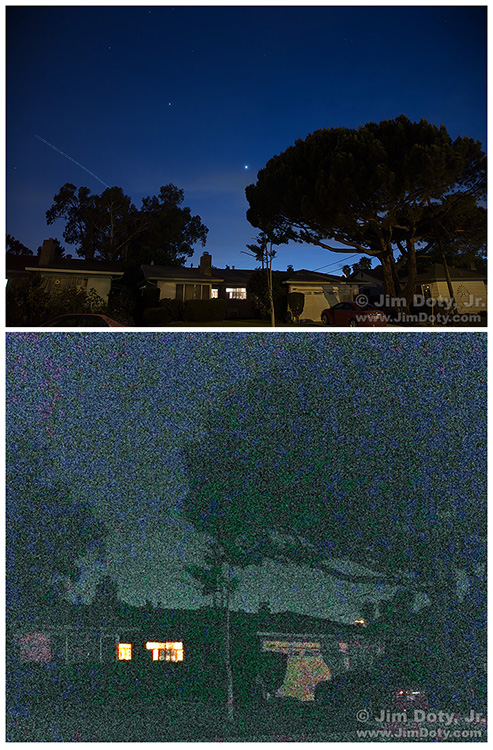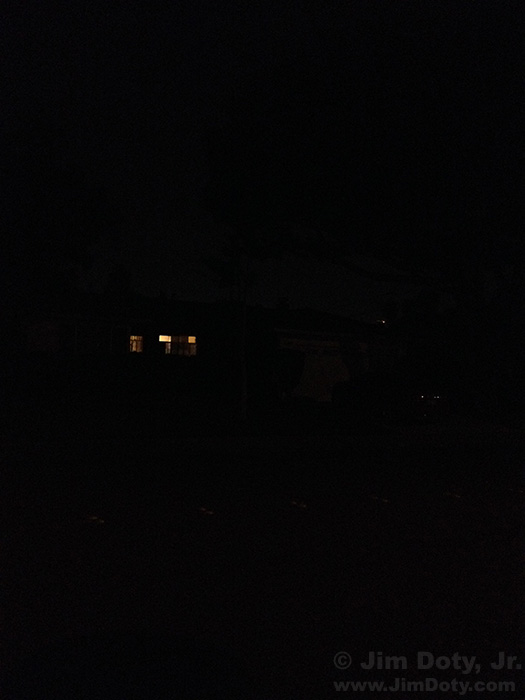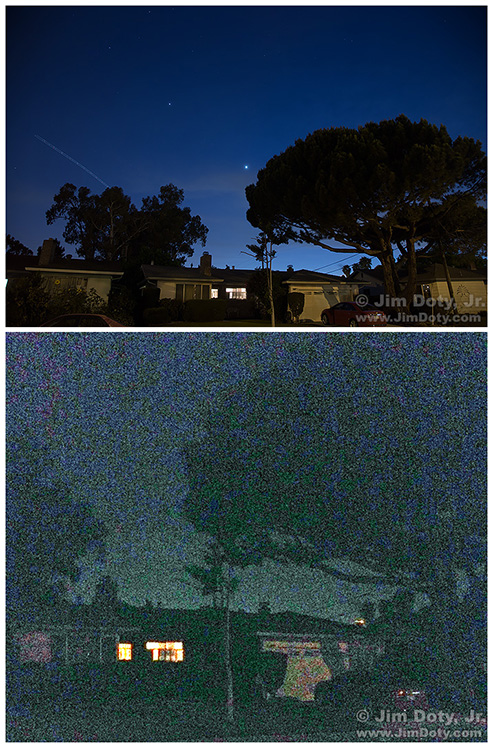Camera phones have serious issues when it comes to low light photography. They simply do not have what it takes.
(Click on any of the images in this article to see a larger version.)
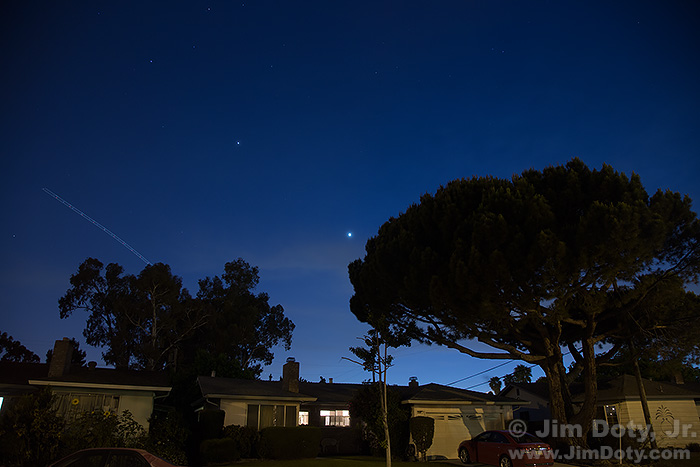
Venus and Jupiter in the night sky over Fremont California. The airplane lights are from a plane headed to San Francisco. Canon 5D Mark III.
At ISO 400 the Canon 5D Mark III gives me a very clean image in a long, 15 second exposure. (If this photo looks familiar, it was in the middle of my last article.) After taking a number of images with my DSLR, I grabbed my iPhone to see how it would handle the same situation with the same light from the same location.
The iPhone gives me a very dark image and very little control over the exposure. About all you can see in this original image are the windows in the house. What if we try and pull something out of those murky shadows?
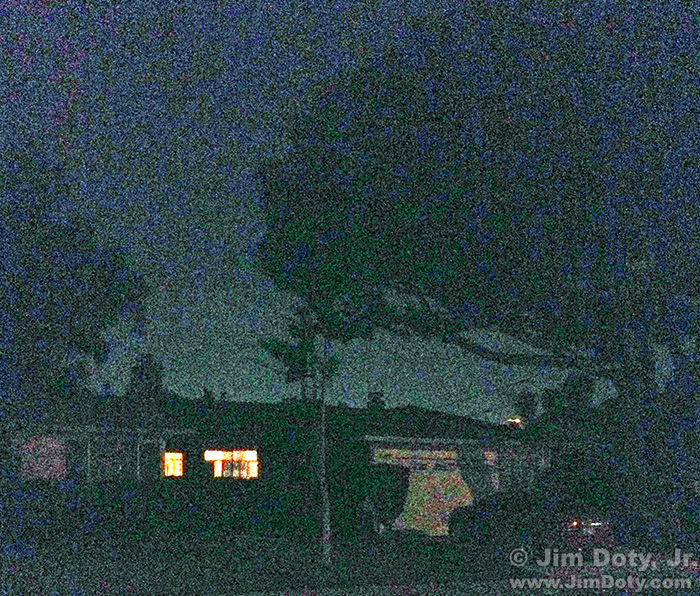
Venus and Jupiter in the night sky over Fremont California. iPhone photo cropped and enhanced in Photoshop.
I took the original iPhone image and added levels and curves adjustment layers in Photoshop. I pulled the sliders in Levels all the way to the left to lighten the image to the very limit so what Levels could do. It was still dark so I lightened it some more with Curves. Then I used the Camera Raw filter to refine the image. The results clearly aren’t pretty. The noise is terrible. You can barely make out Venus in the midst of all the digital noise. This is a common problem with camera phones and tiny sensors. The signal to noise ratio in a typical camera phone sensor is at a serious disadvantage when compared to the much larger sensor of a DSLR with a much better signal to noise ratio. In addition, many camera phones won’t let you use a shutter speed longer than one second. There are phone apps to work around that (I have tried them) and the results are still pretty ugly. It is what it is. You can see the house and trees but this photo is nothing to write home about. The sky part of the image is worthless and even after the using the Camera Raw filter, the color is still bad.
Once again, here are the comparison photos.
Photo Data: Venus and Jupiter in the night sky over Fremont California.
Canon 5D Mark III. Canon EF24-105mm f/4L IS USM lens at 24mm. 15.0 sec, f/5.6, ISO 400.
iPhone: 4S back camera 4.28mm f/2.4. 4.3 mm lens (in 35mm: 35.0 mm). 1/15 sec, f/2.4, ISO 800.
Links
DSLR vs Camera Phone, Part One
For a good introduction to night and low light photography, read Digital Photography Exposure for Dummies, one of the highest rated photography books at Amazon.com. You can order it here from Amazon’s third party sellers.
If you are seriously interested in night sky photography, read one of The Best Astronomy and Astrophotography Books.

